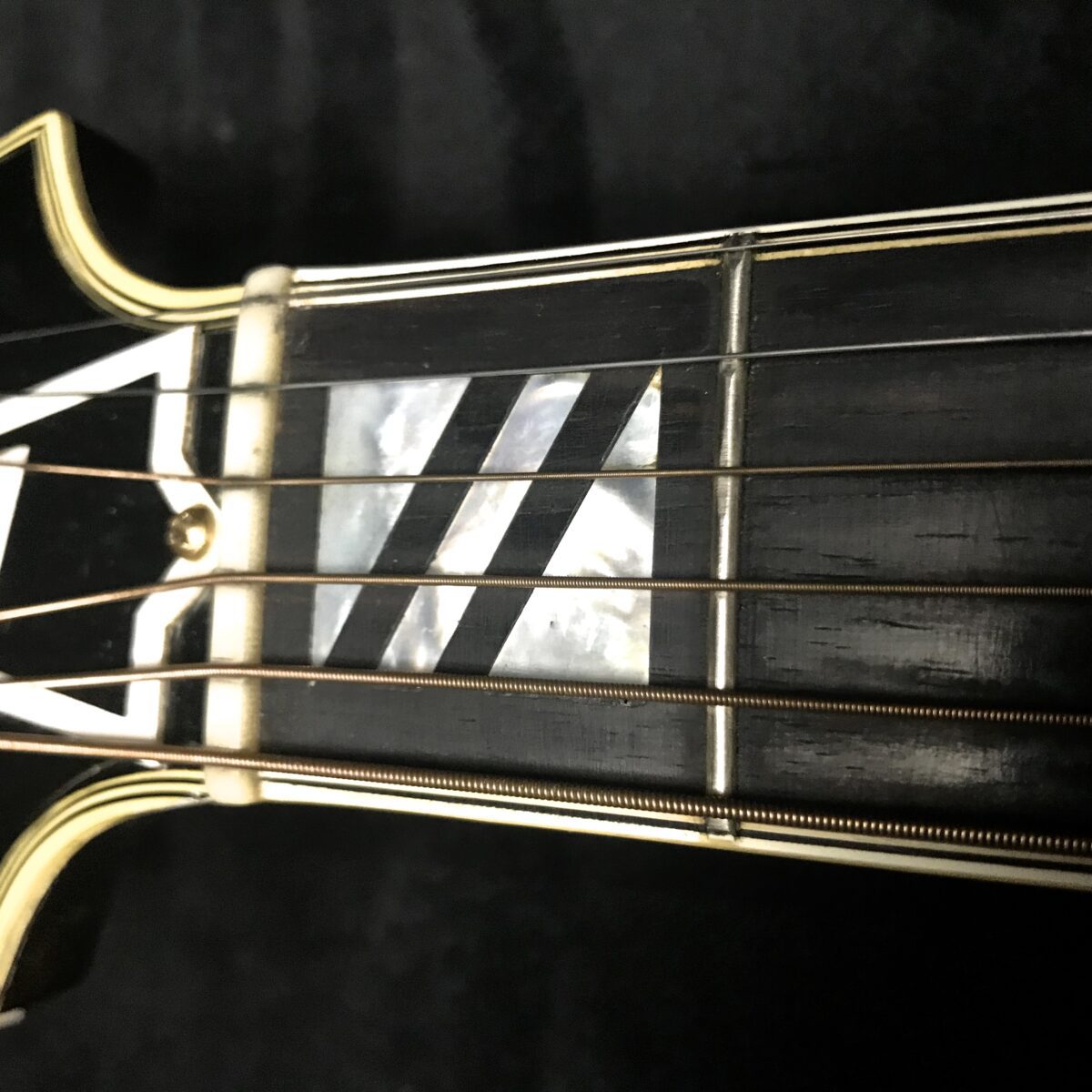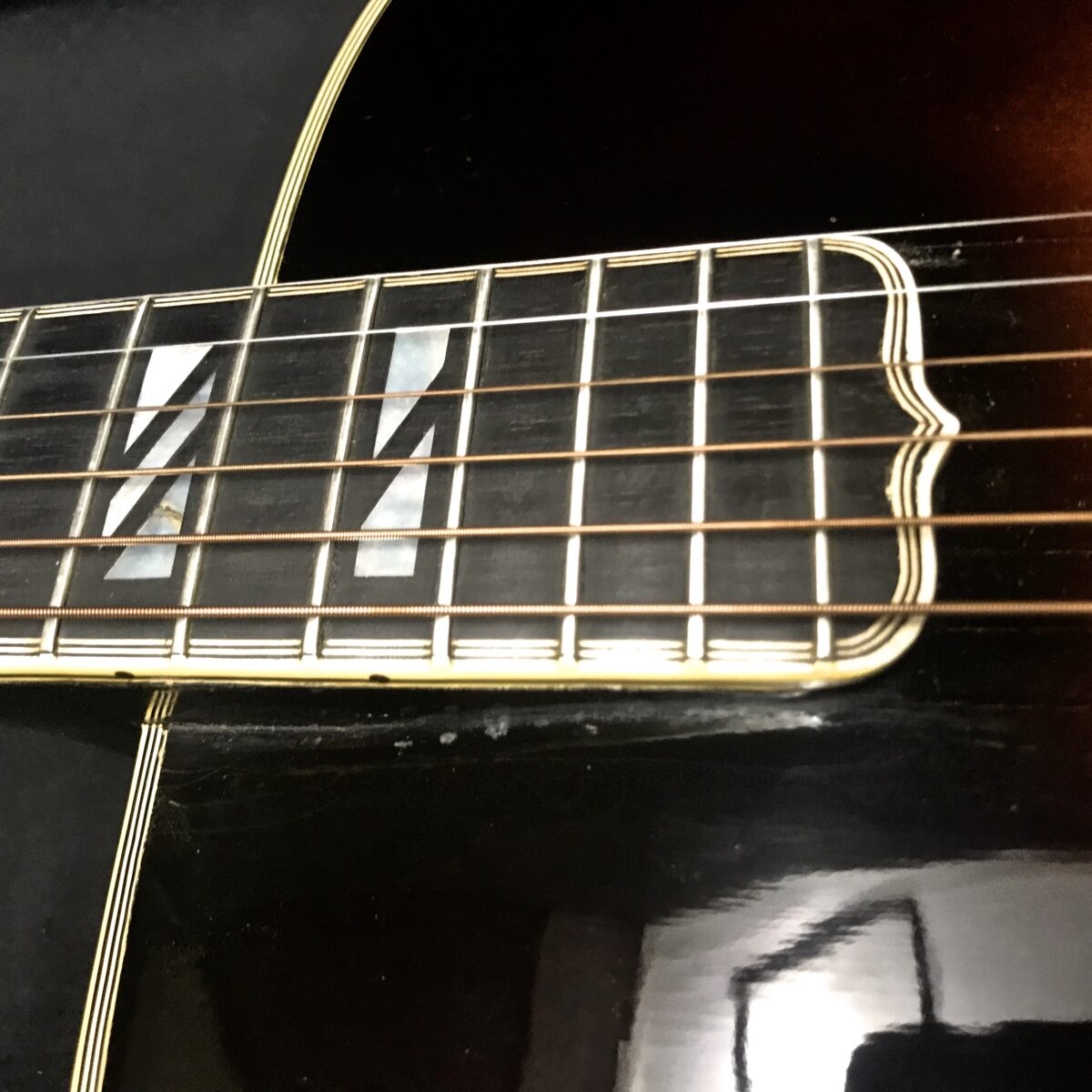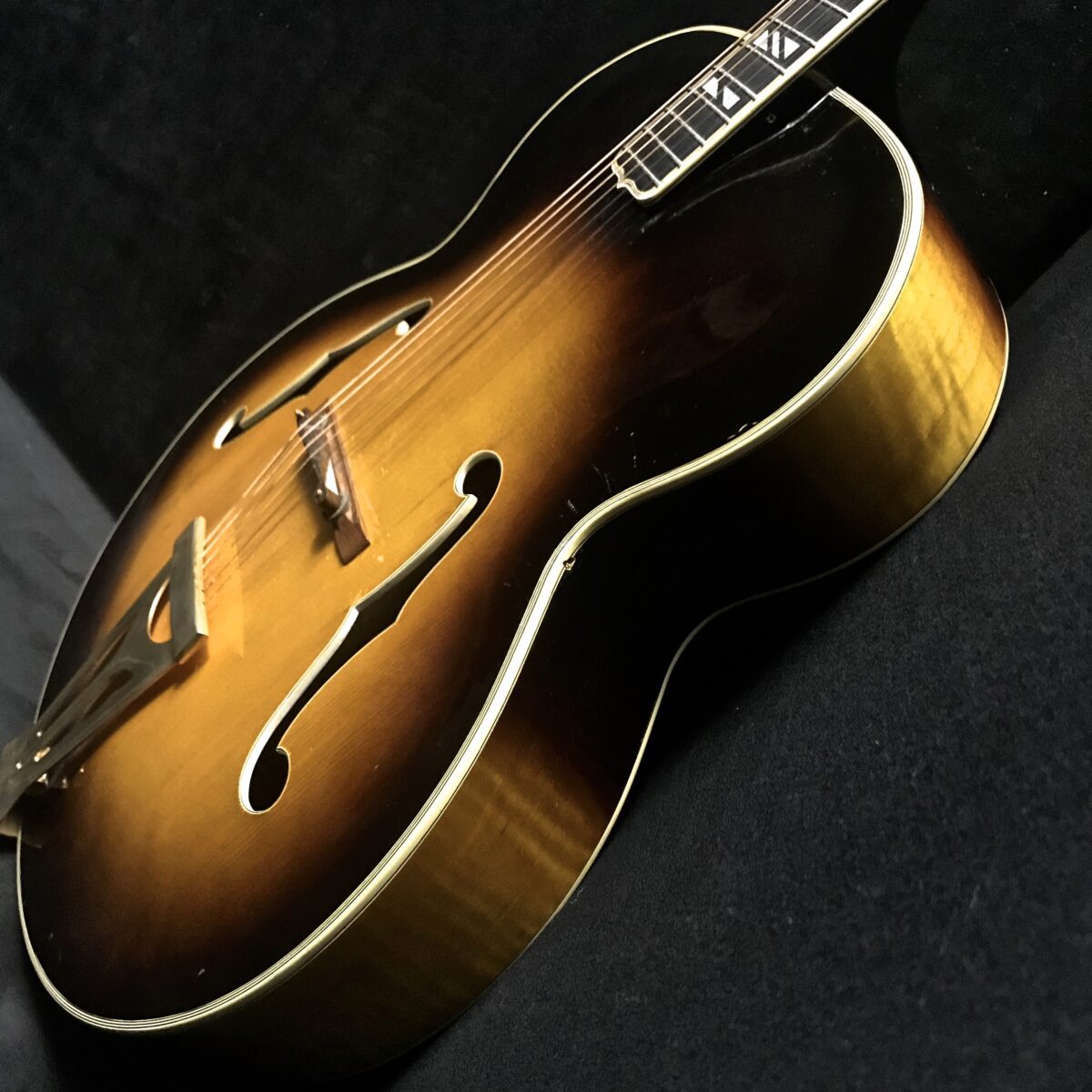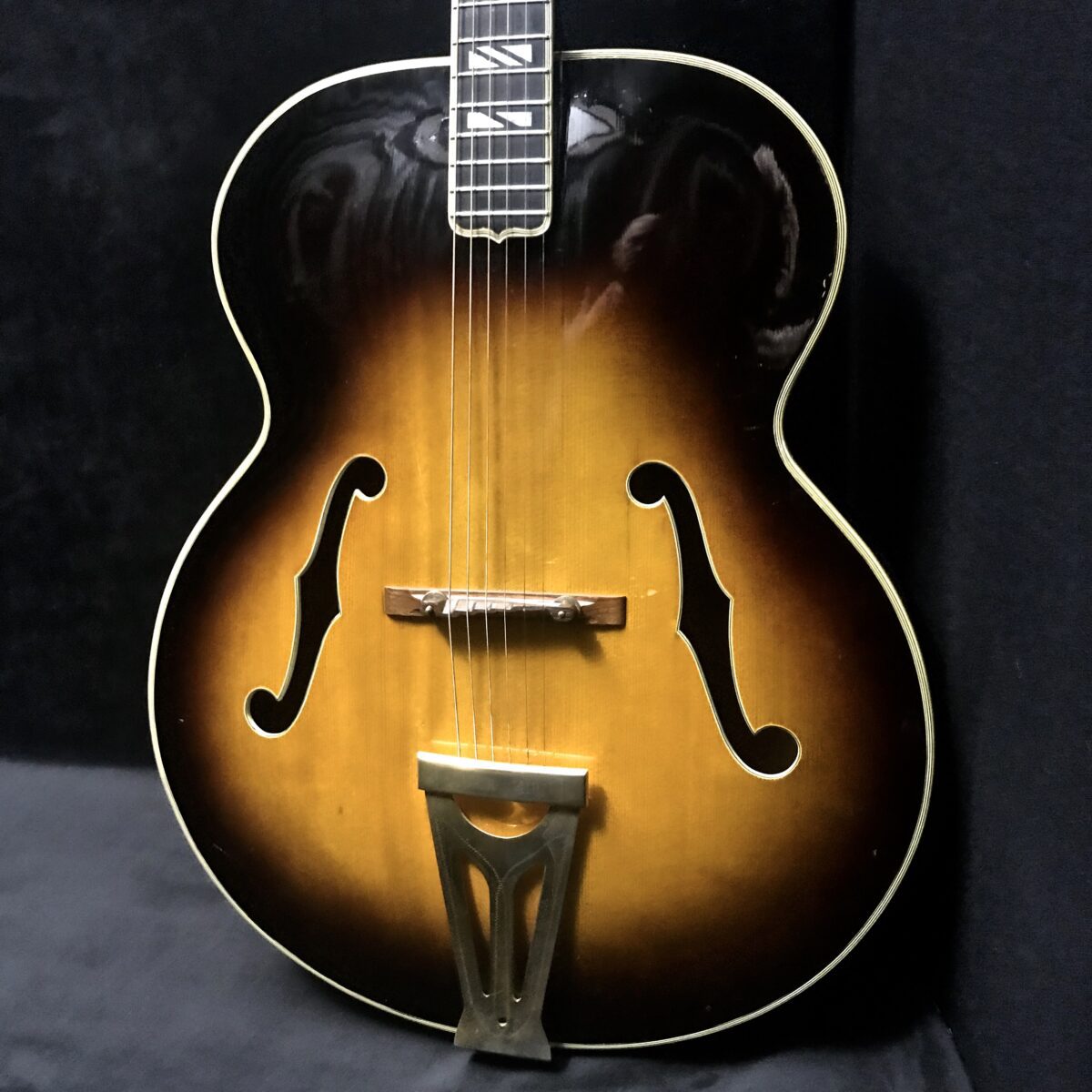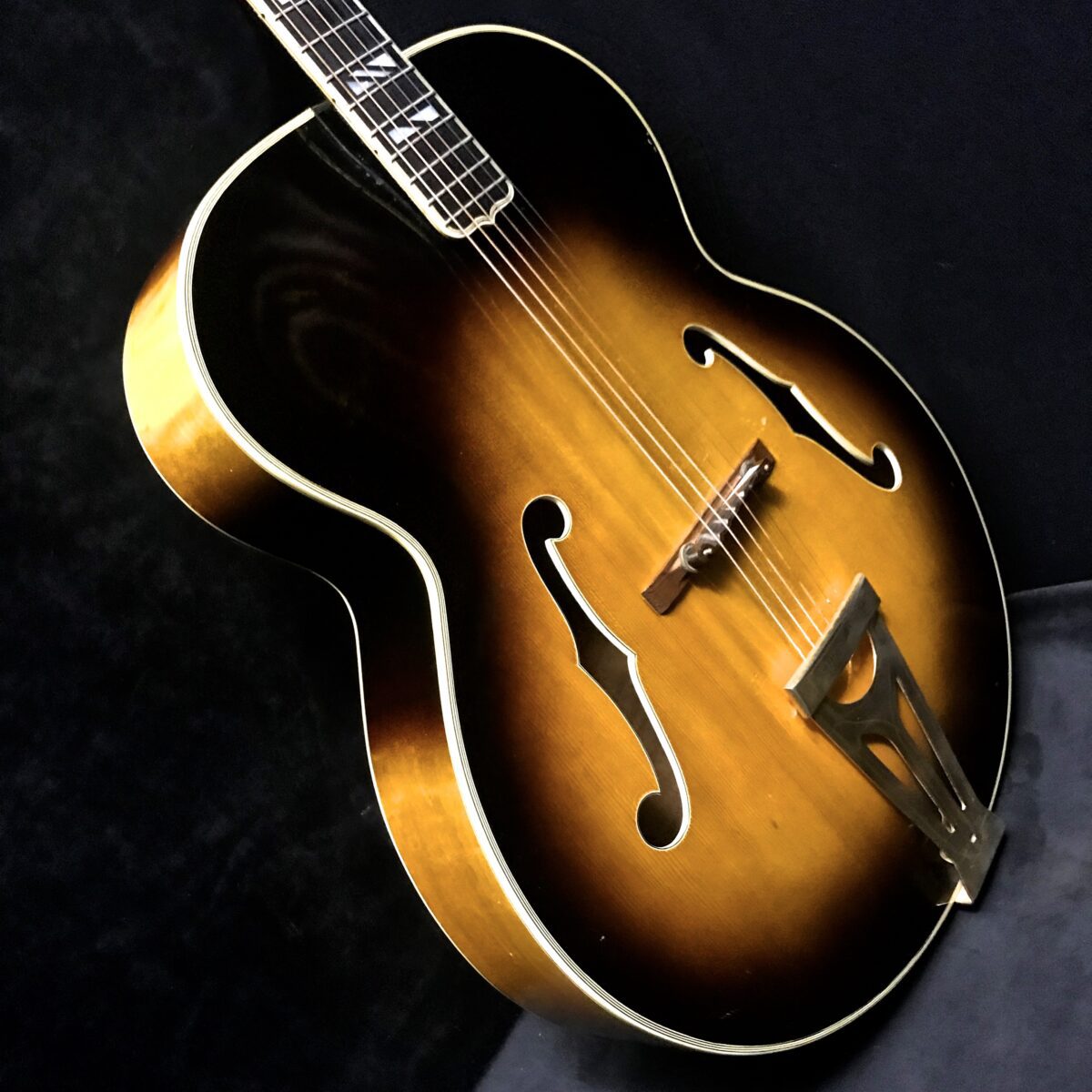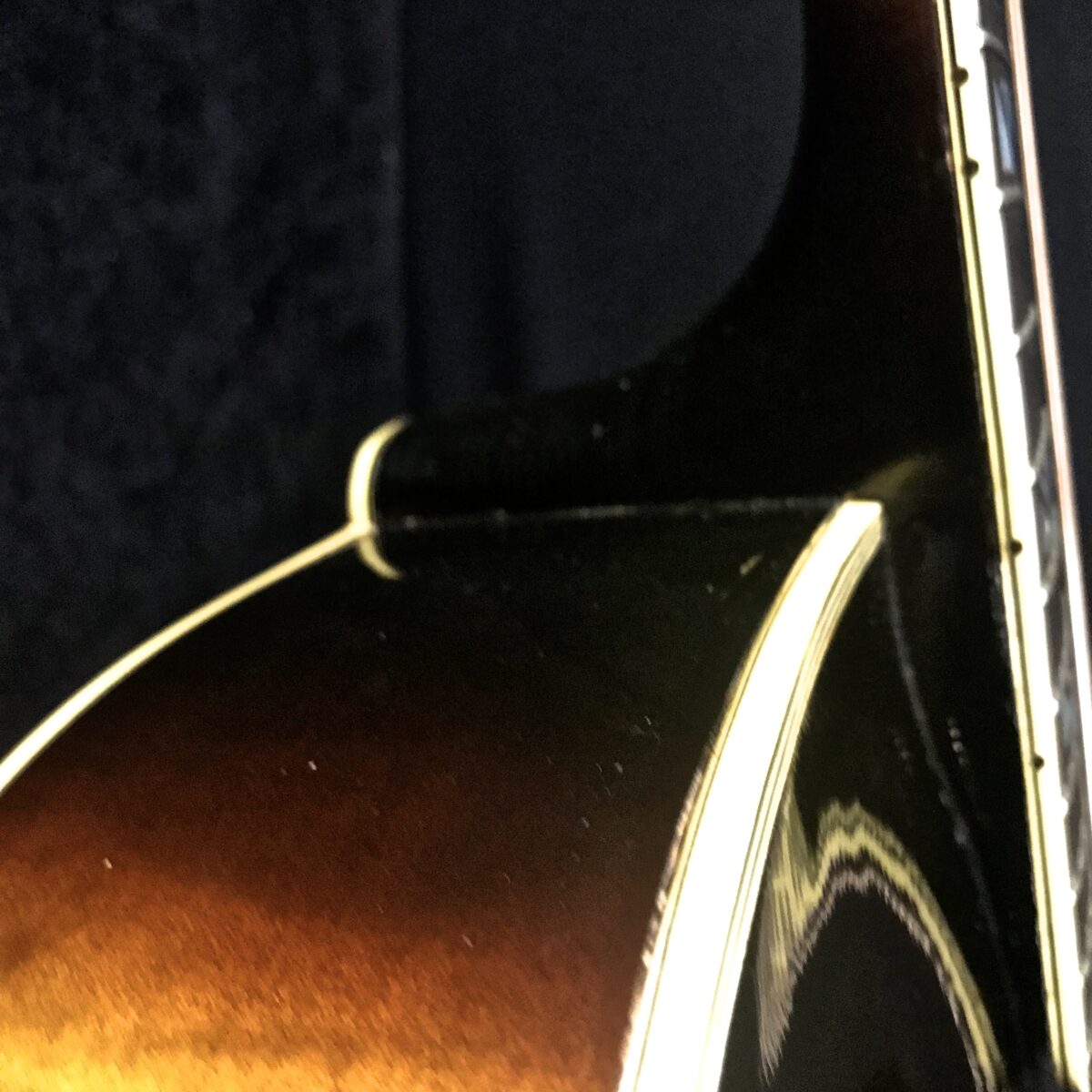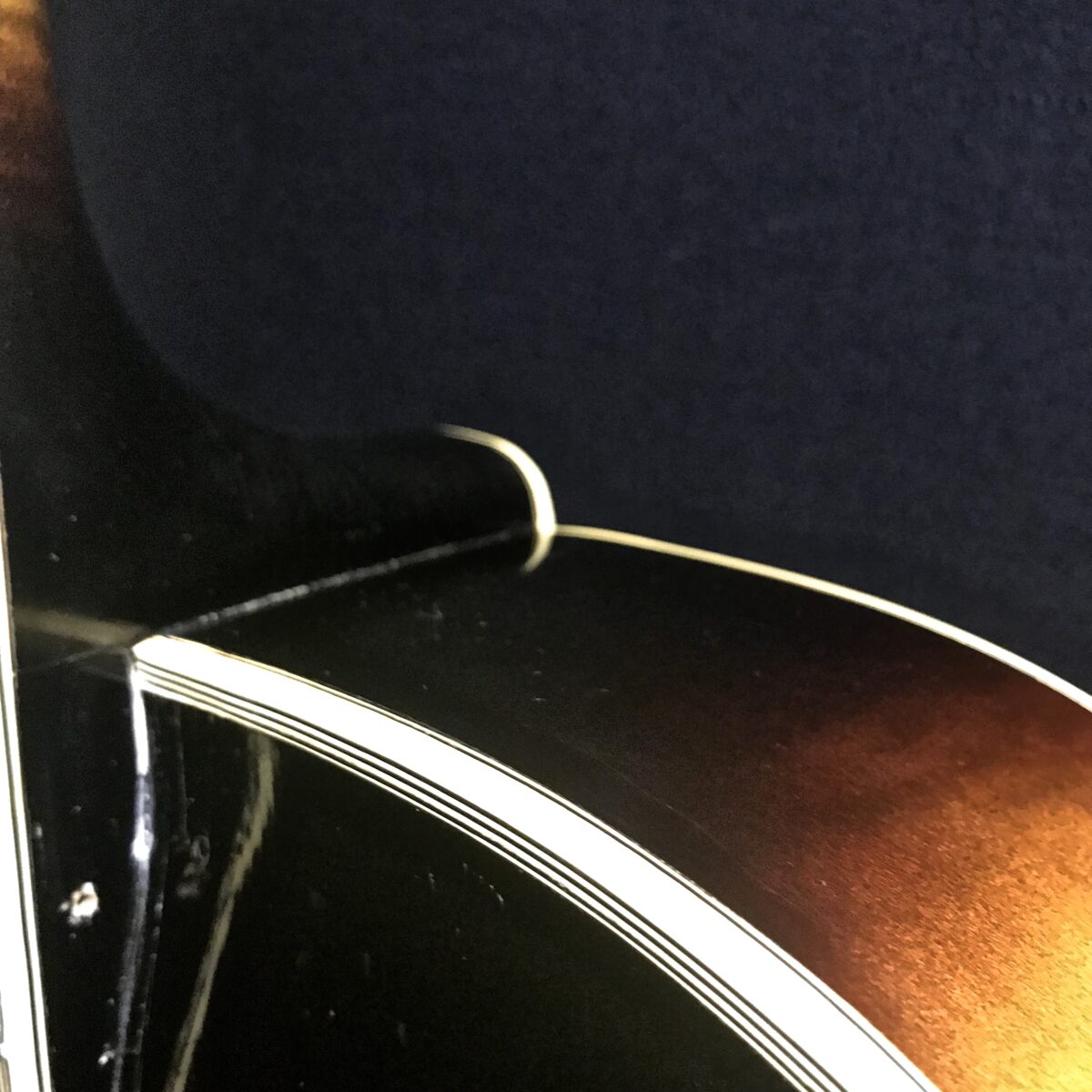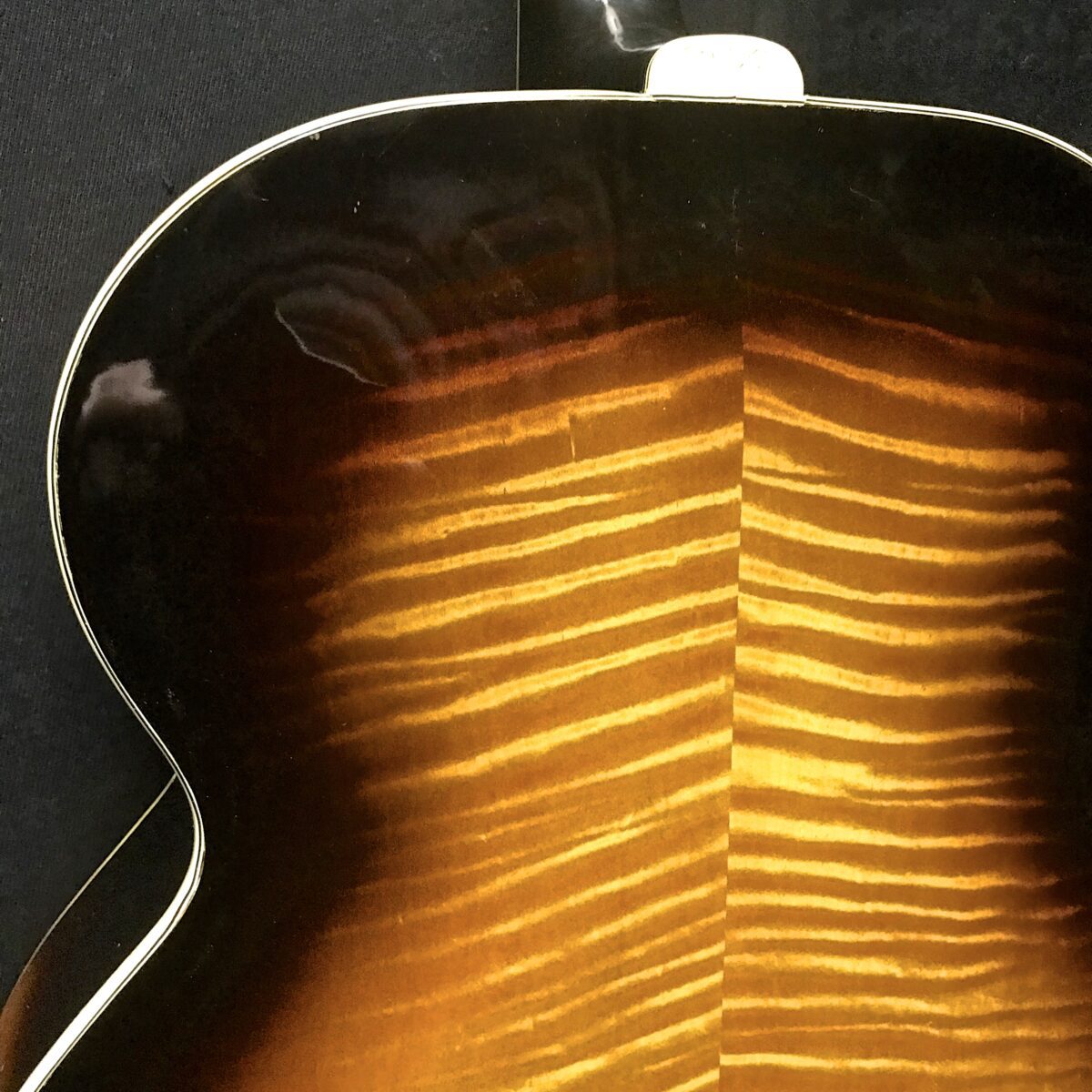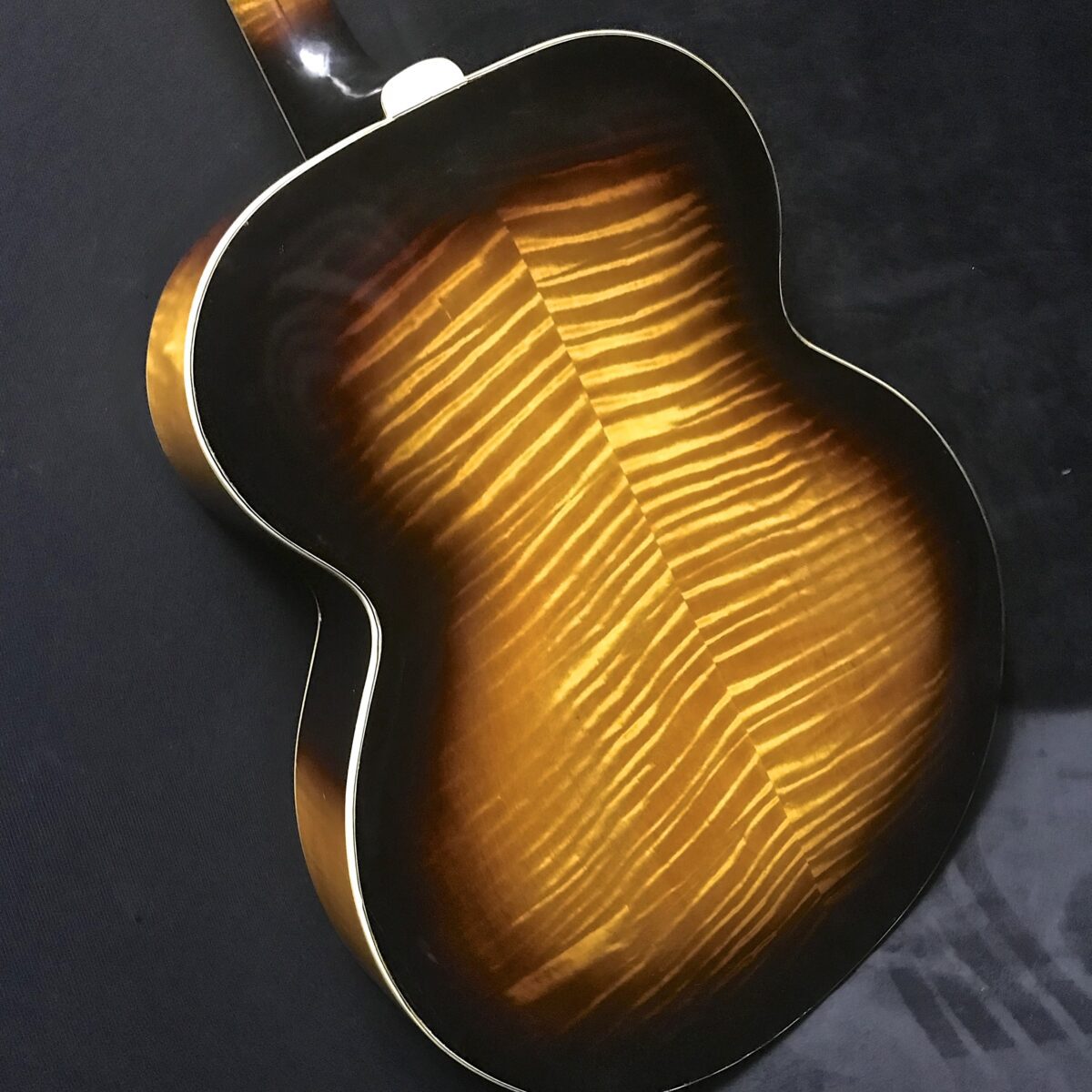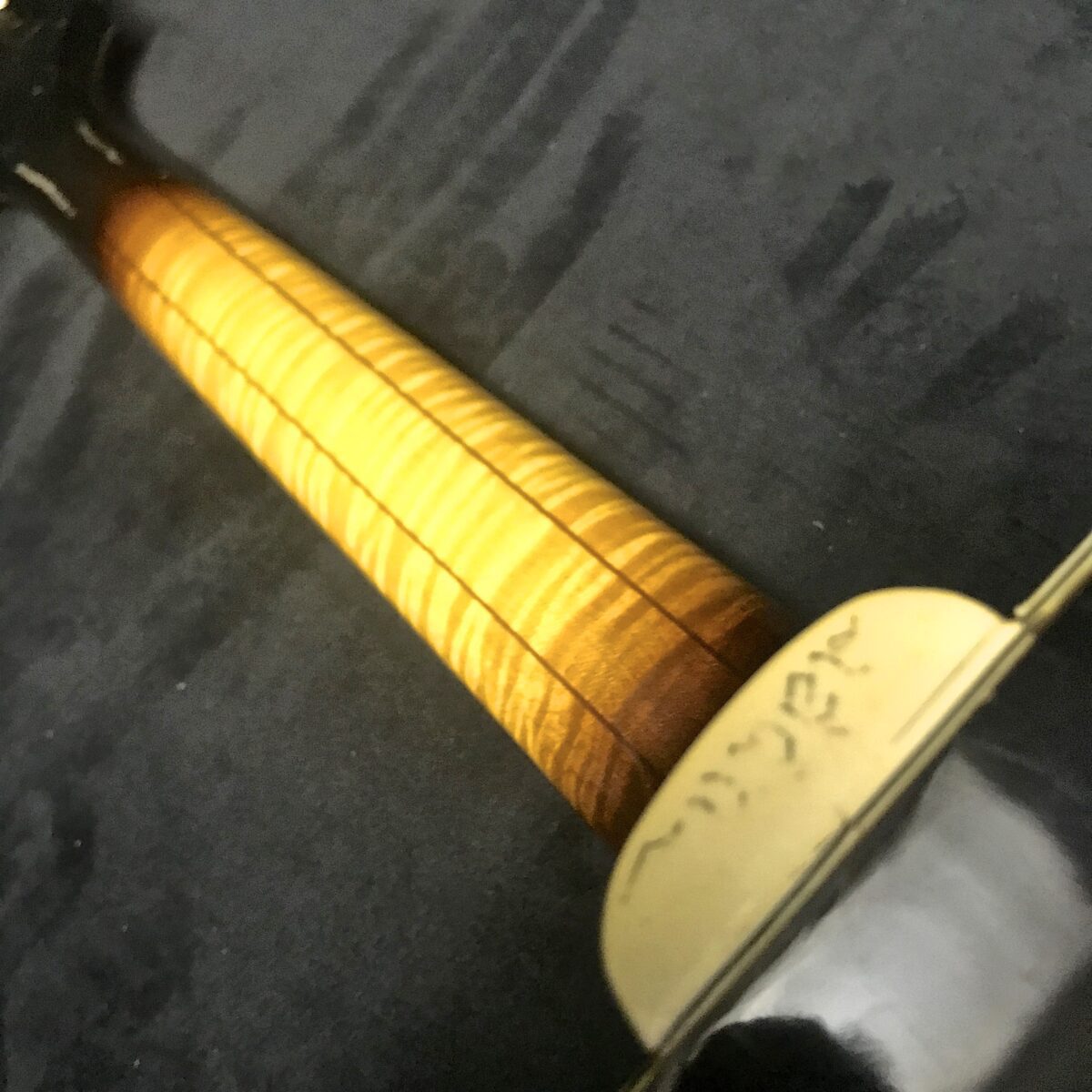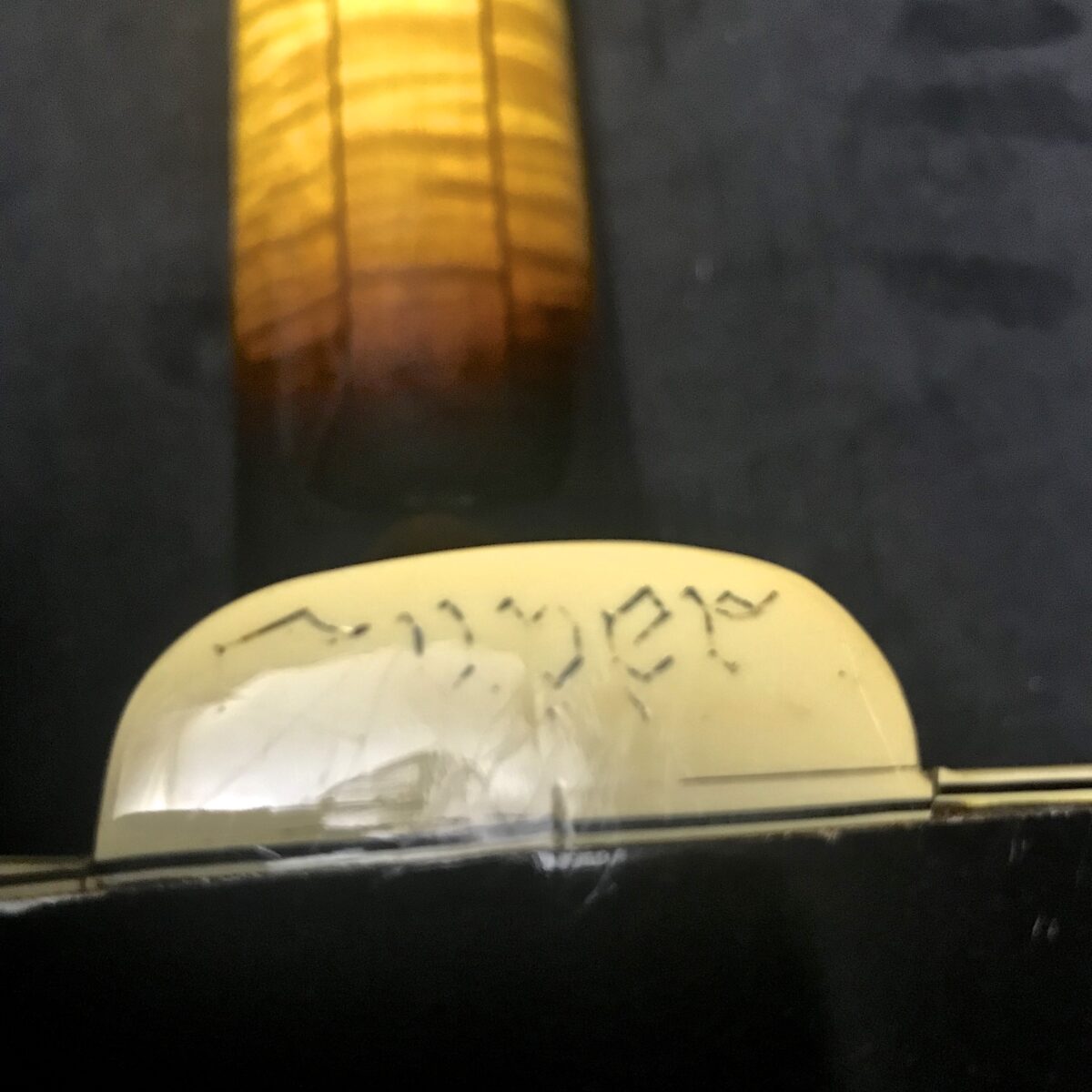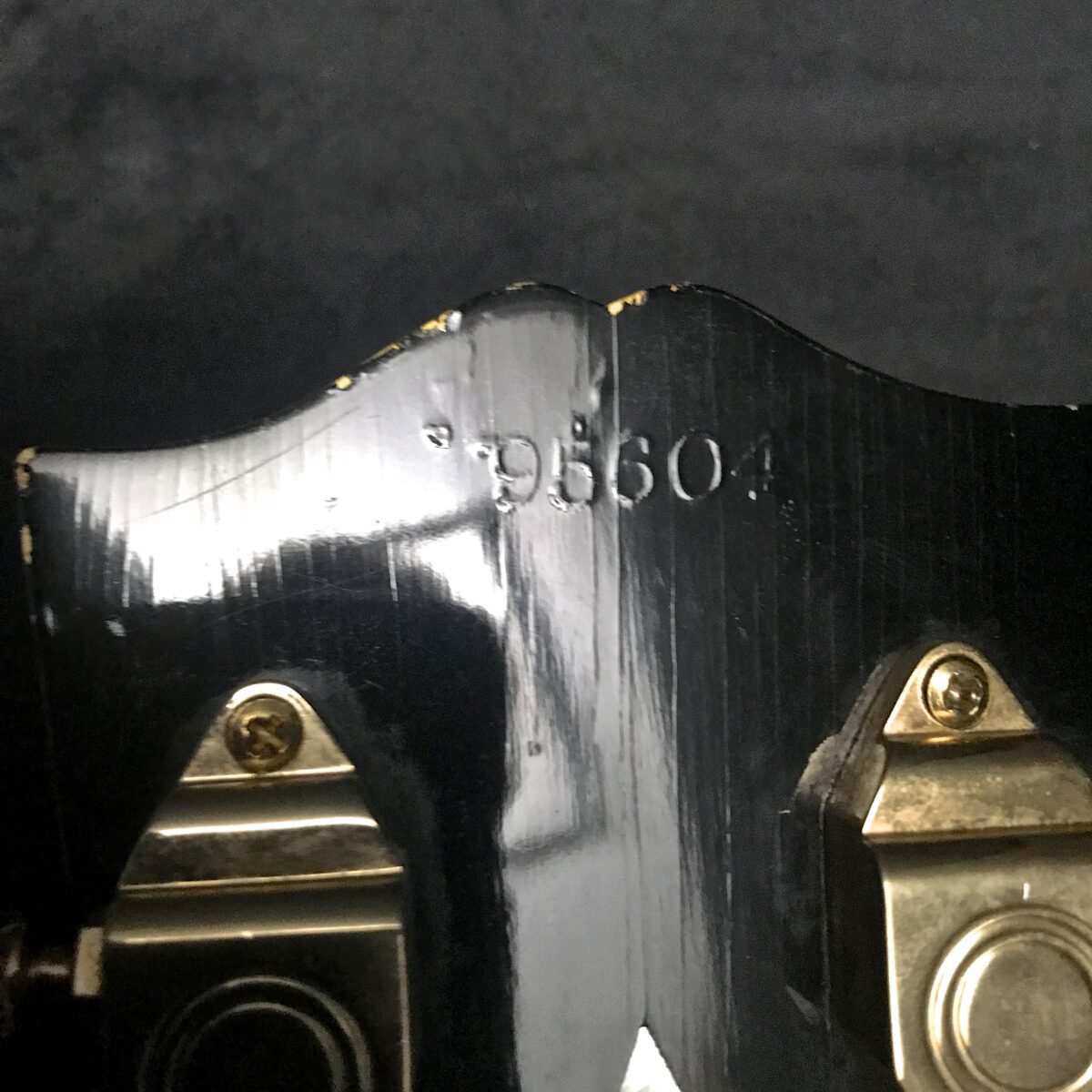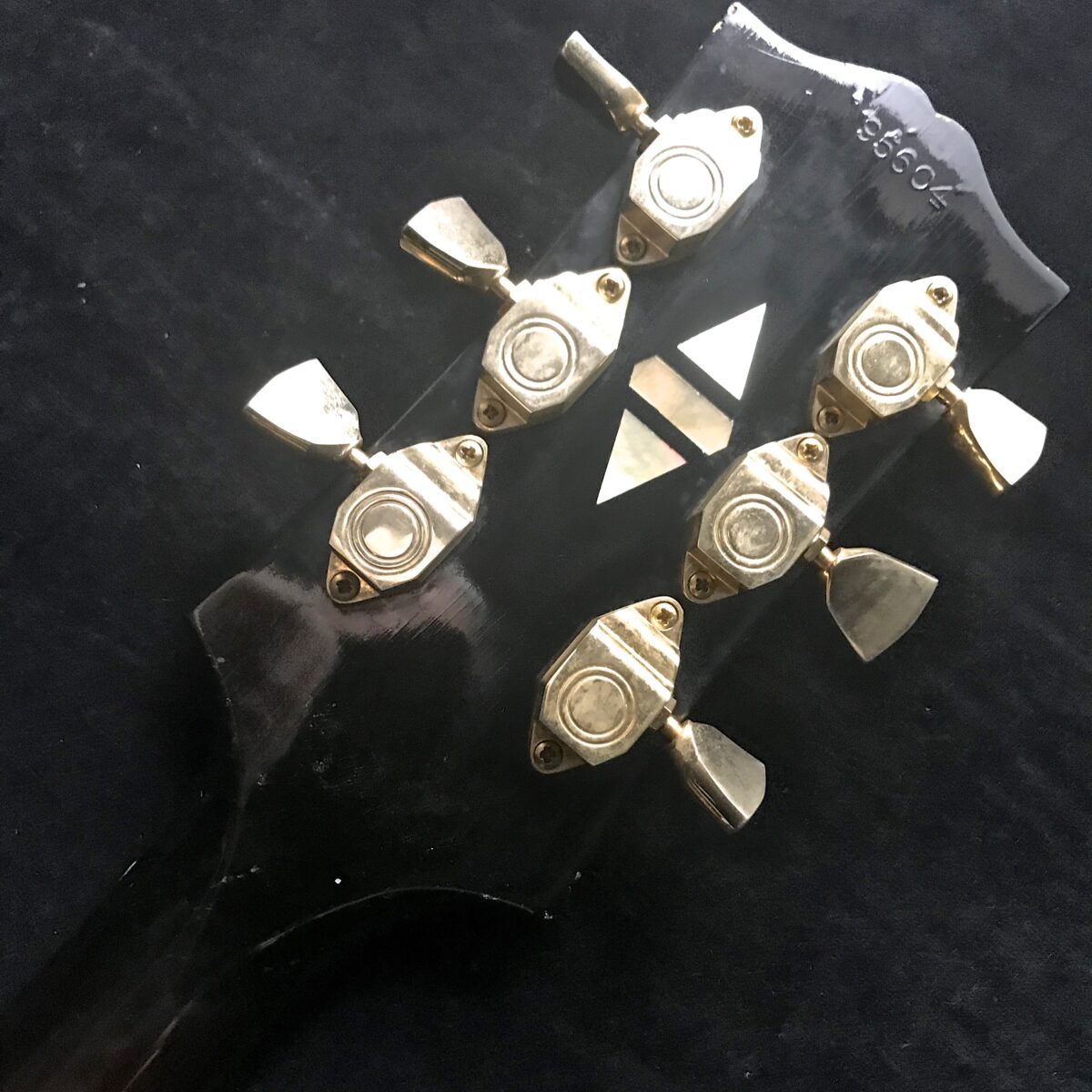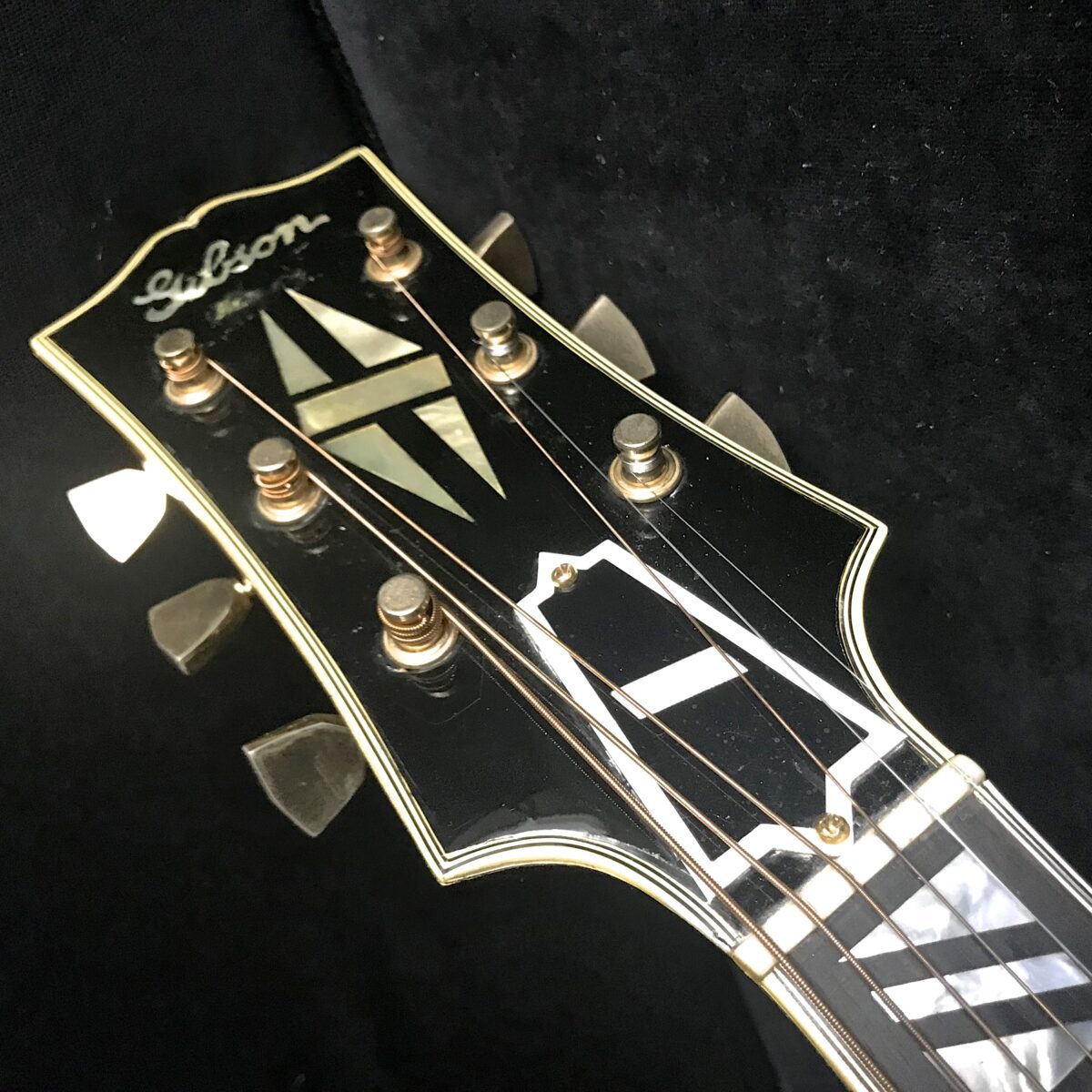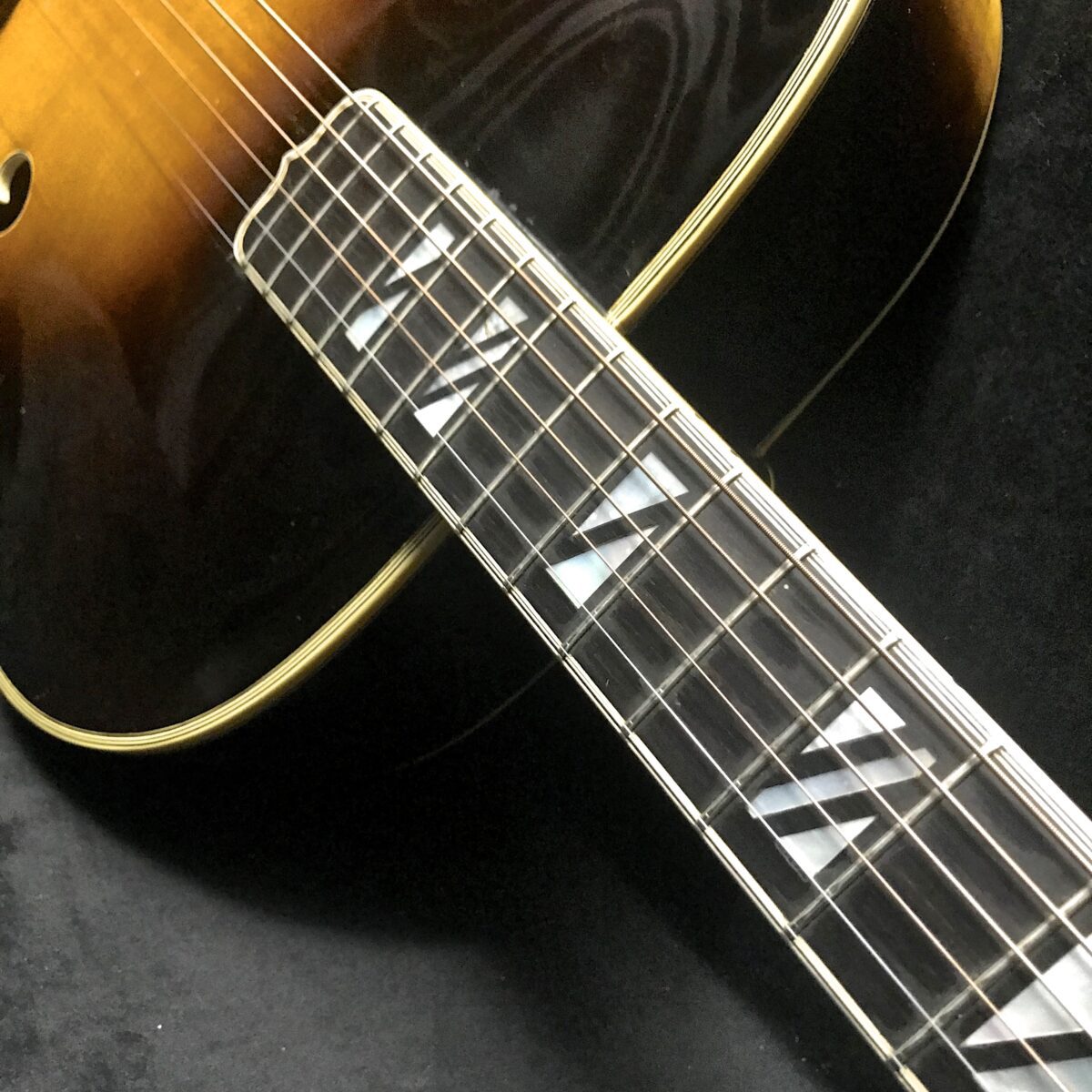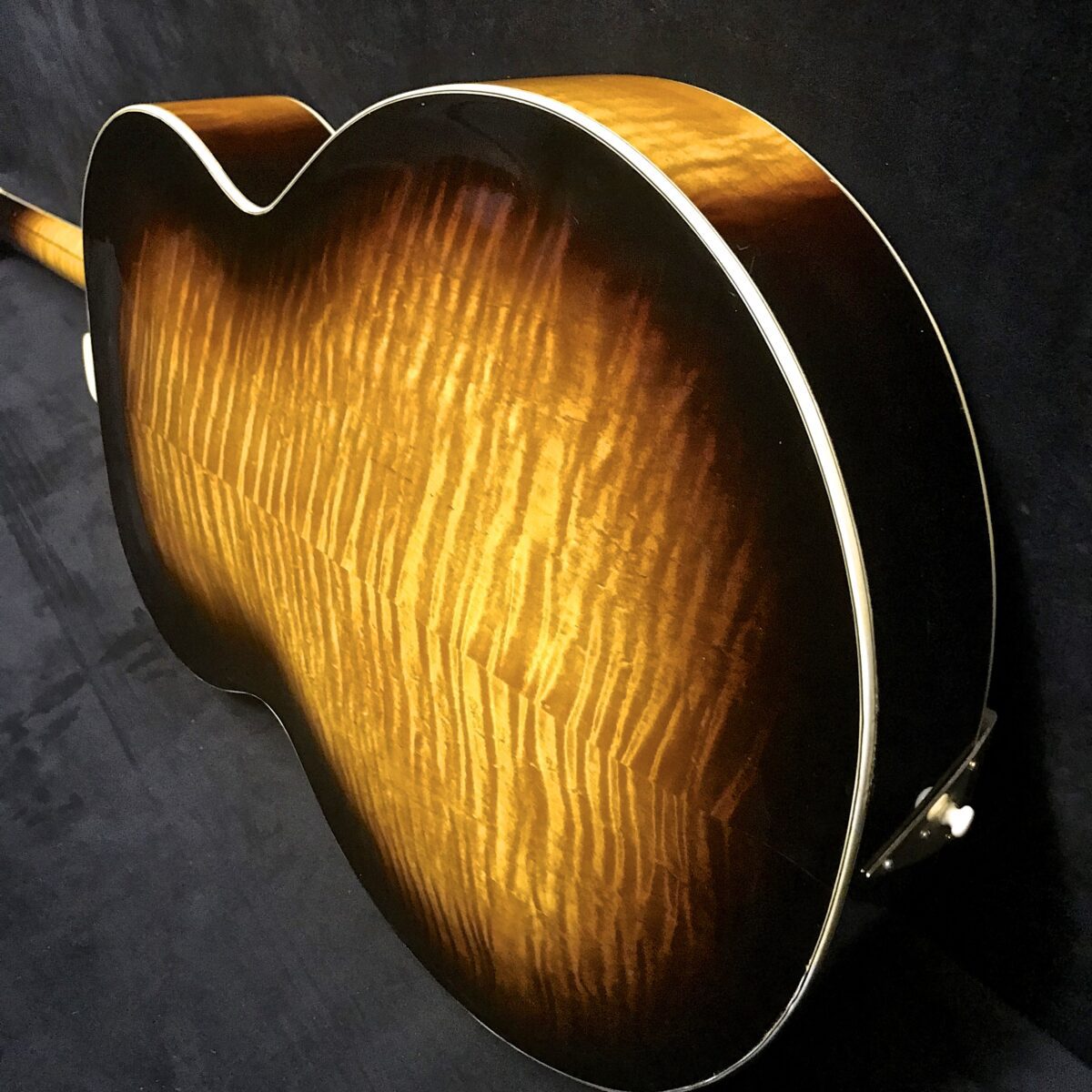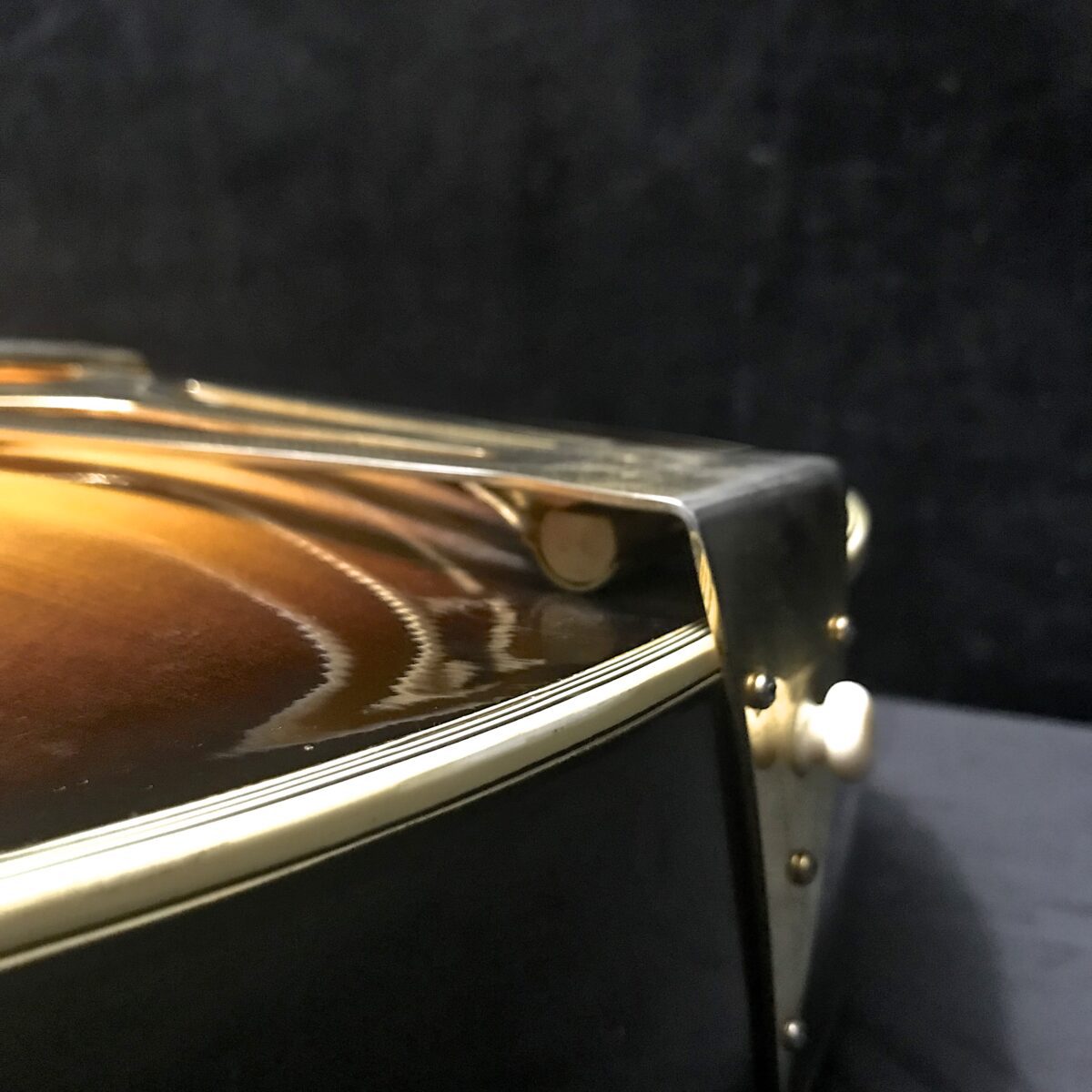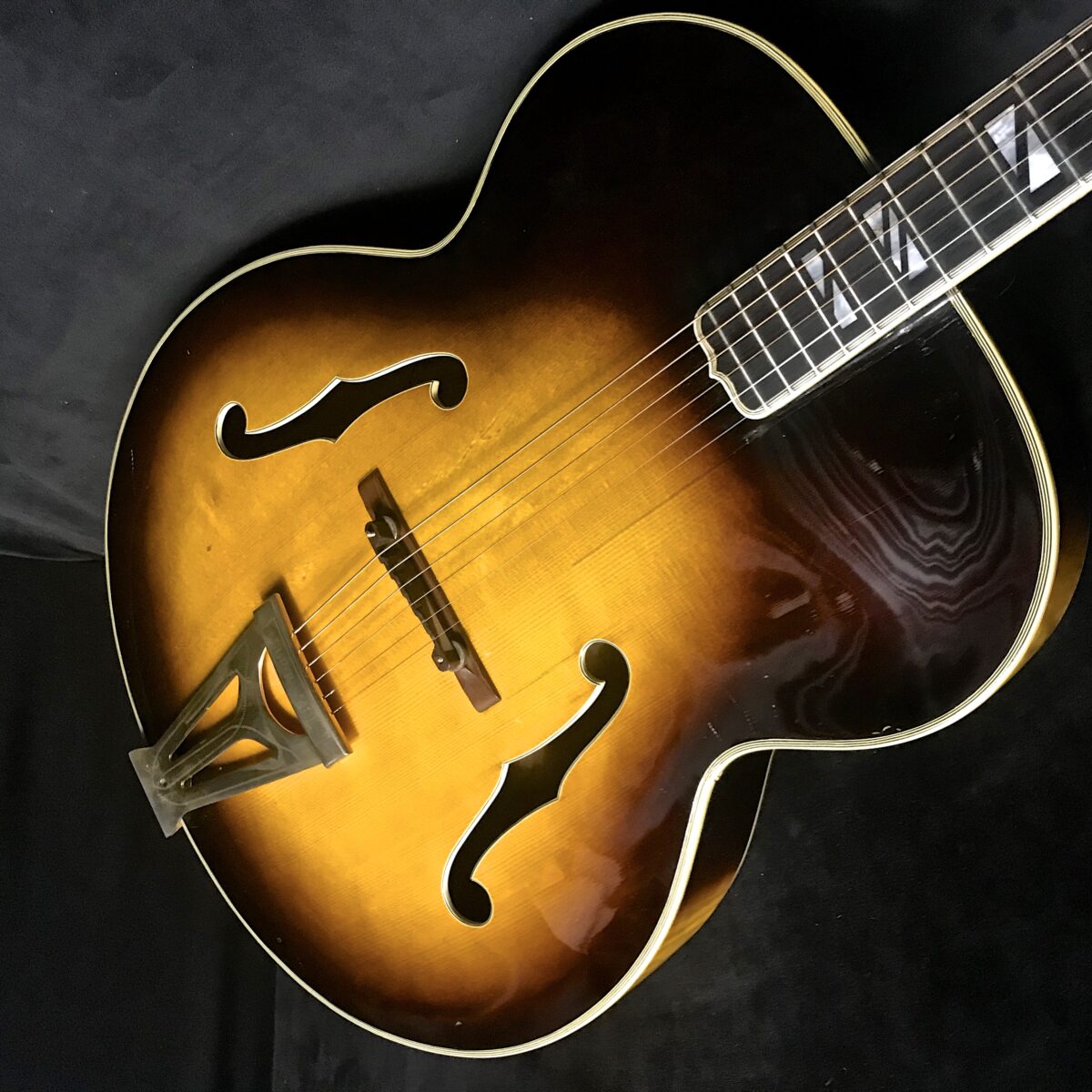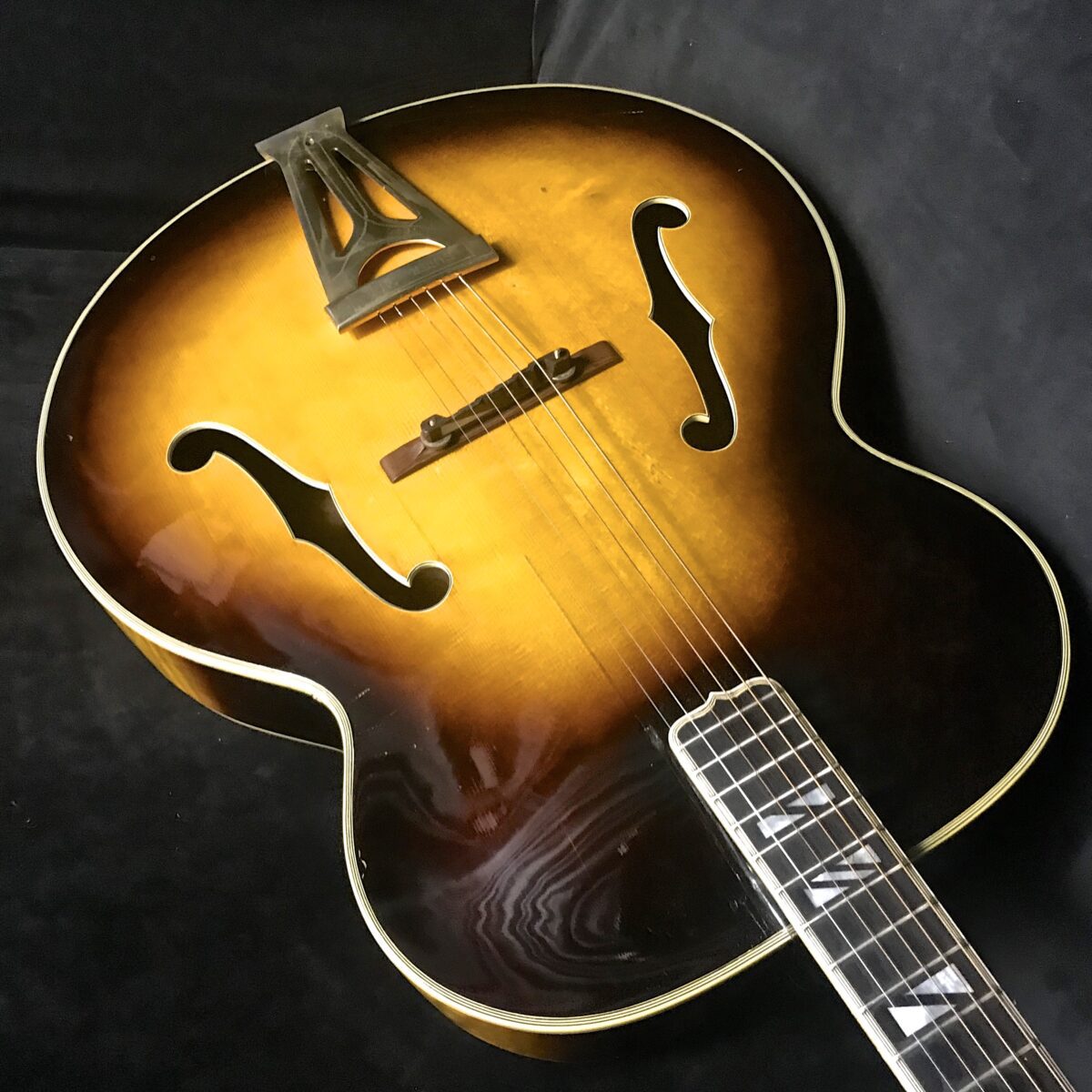Product Description
This all original non cutaway Super 400 features solid carved-wood construction with a carved spruce top and carved maple back and solid maple sides, and upon its introduction was the largest guitar that Gibson had produced. 18” at the lower bout and 3 3/8” in depth at the rims. Ebony fretboard with 20 frets joined to the body at the 14th fret and original rosewood bridge. The nut width is 1 10/16”, 1 14/16” at the 7th fret and a comfortable 2 1/16 at the 12th fret. Upon careful inspections we find some minor repairs on the lower bout on the treble side, and a few top cracks glued but not cleated. Also the nut slots are low and shallow and a new nut will be made and provided with the original nut. This guitar has great tone and was made to cut through the big bands of the time. The hardware is all original and in very good comdition. Comes in a non original 18” case. Reasonable offers will be considered.
Guitar History: Until 1939, the Super 400s had a hand-engraved tailpiece and a hand-engraved finger rest support. During the very early production stock the truss rod cover had engraved “L5 Super”; on later guitars this was changed to “Super 400”. The Super 400 went through several changes, including a slightly wider upper-bout dimension in ’37, an improved tailpiece in ’39, parallel top bracing (the originals had been X-braced) in ’39.
In 1939 the guitar was changed. The upper bout was enlarged, and the hand-engraved tailpiece was replaced with the one still fitted today on current Super 400s. The f-holes were slightly enlarged and a cutaway option also became available called the Super 400P (for Premiere), later changed to C for Cutaway.
In ornamentation, too, Gibson took giant steps. The pearl block fingerboard inlays that had identified the L-5 archtop since 1929 were appropriated for the Super 400 and given diagonal slashes. A five-piece diamond-shaped headstock inlay also incorporated an angled slash, and the diamond was repeated on the back of the peghead in a three-piece inlay.Every edge of the new model was at least triple-bound, with the top receiving seven-ply binding. A massive Y-shaped tailpiece was engraved with the model name, and the gold-plated tuners also had engraving on the buttons. Even the neck heel cap was engraved with the model name. The pickguard was celluloid with an eye-catching marbleized pattern.
Initially, guitarists had a choice of a thin top or thick top. The difference of about 1/16″ was expected to make a noticeable difference in tone, but it proved a negligible tonal difference, and the tops soon became all the same.

